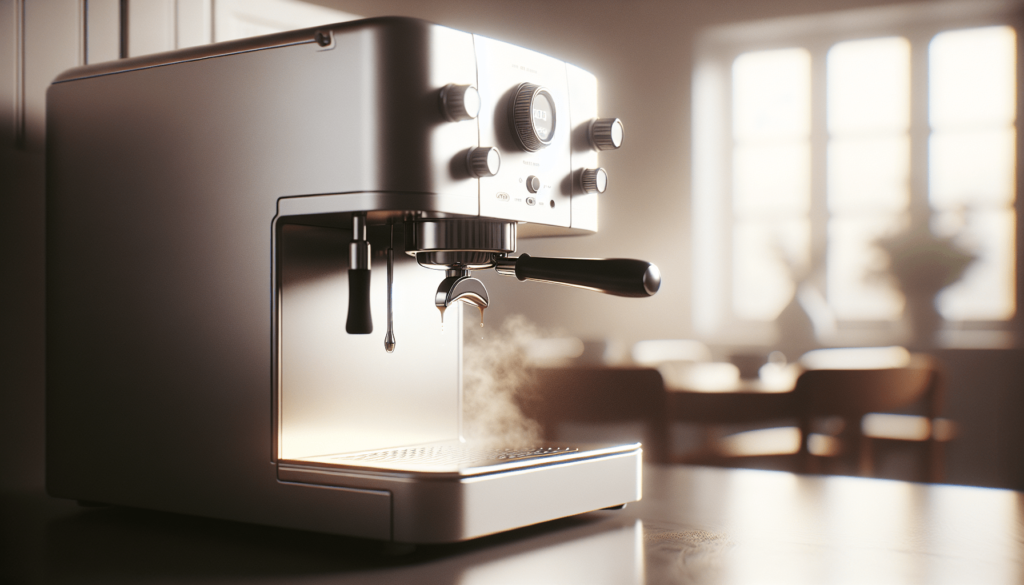Have you ever noticed your coffee tasting a bit off or your machine taking longer to brew a cup? These could be signs that your coffee machine needs descaling. Descaling is an essential maintenance step to keep your coffee machine running smoothly and ensure your coffee tastes its best.

Understanding Descaling
Descaling is the process of removing mineral build-up, primarily calcium, from the internal components of your coffee machine. These minerals accumulate over time due to the natural mineral content in tap water. Descaling is necessary because these deposits can affect the machine’s performance and the quality of your coffee.
What Causes Scale Build-Up?
Water contains minerals like calcium and magnesium, especially if you live in an area with hard water. When water is heated inside the coffee machine, these minerals can deposit as scale on the heating elements and other internal parts. This build-up can obstruct water flow and reduce the machine’s efficiency.
Importance of Regular Descaling
Regular descaling is crucial for several reasons. First, it helps maintain the taste and quality of your coffee. Mineral deposits can alter the flavor, making your coffee taste bitter or unpleasant. Second, it prolongs the lifespan of your coffee machine. Excess scale can cause damage to internal components over time, leading to costly repairs or the need for a replacement.
Signs Your Coffee Machine Needs Descaling
Identifying the signs that your coffee machine needs descaling is the first step towards maintaining it properly. Here are some common indicators:
1. Prolonged Brewing Time
If your coffee machine is taking longer than usual to brew a cup of coffee, it might be due to scale build-up restricting water flow.
2. Odd Tasting Coffee
A sudden change in the taste of your coffee, such as a more bitter or metallic flavor, can be a sign of mineral build-up affecting the taste quality.
3. Reduced Steam or Hot Water
For machines that produce steam or hot water, a noticeable reduction in output or temperature can indicate scale build-up on the heating elements.
4. Visible Scale Deposits
Sometimes, you may see visible white or chalky deposits within the water reservoir or the machine’s spout. This is a clear sign of scale accumulation.
5. Noisy Operation
If your coffee machine starts making unusual noises, it could be due to the scale interfering with the normal operation of its internal components.
How Often Should You Descale?
The frequency of descaling depends on several factors, including the hardness of your water, how often you use the machine, and the type of coffee machine you have. Here’s a general guideline:
| Machine Type | Light Usage (1-2 cups/day) | Heavy Usage (3+ cups/day) |
|---|---|---|
| Drip Coffee Maker | Every 3-6 months | Every 1-3 months |
| Espresso Machine | Every 2-3 months | Monthly |
| Single-Serve Pod Machine | Every 3-6 months | Every 1-3 months |
| Combination Coffee/Espresso Machine | Every 3-6 months | Every 1-3 months |
Descaling Methods
Descaling can be done using commercial descaling solutions or homemade remedies. Both methods can be effective, but it’s important to follow your coffee machine manufacturer’s recommendations.
Commercial Descaling Solutions
These are specially formulated to effectively remove scale deposits. They often contain citric acid or other descaling agents that are safe for use in coffee machines. Here’s how to use a commercial descaling solution:
- Read Instructions: Always start by reading the instructions on the descaling solution package.
- Prepare the Solution: Mix the descaling solution with water according to the package instructions.
- Run a Cleaning Cycle: Fill your machine’s reservoir with the solution and run a cleaning cycle.
- Rinse: After descaling, run at least one full cycle with fresh water to remove any residue from the solution.
Homemade Descaling Solutions
If you prefer a more natural approach, you can use common household ingredients like vinegar or lemon juice.
Vinegar Descaling Solution
- Mix Solution: Combine equal parts white vinegar and water.
- Run a Cleaning Cycle: Pour the mixture into the water reservoir and run a cleaning cycle.
- Rinse: Run one or two cycles with fresh water to ensure all vinegar is removed.
Lemon Juice Descaling Solution
- Mix Solution: Combine one part lemon juice with three parts water.
- Run a Cleaning Cycle: Pour the mixture into the water reservoir and run a cleaning cycle.
- Rinse: Run at least one full cycle with fresh water to remove any lemon juice residue.

Step-by-Step Descaling Guide
Regardless of the method you choose, here’s a step-by-step guide to help you descale your coffee machine correctly:
Step 1: Read the Manual
Before you start, consult your coffee machine’s user manual. Some machines have specific descaling instructions that you should follow.
Step 2: Prepare the Machine
- Turn Off: Ensure your coffee machine is turned off and cooled down.
- Empty: Empty any remaining water or coffee from the machine’s reservoir and drip tray.
Step 3: Prepare Descaling Solution
- Commercial Solution: Follow the instructions on the package.
- Homemade Solution: Mix vinegar or lemon juice with water as described above.
Step 4: Fill the Reservoir
Pour the descaling solution into the machine’s water reservoir.
Step 5: Run the Descaling Cycle
- Start the Cycle: Turn on the machine and start a brewing or descaling cycle.
- Pause: If your machine allows, pause the cycle halfway to let the solution sit and break down the mineral deposits.
- Complete: Resume and complete the cycle.
Step 6: Rinse Thoroughly
After descaling, it’s crucial to rinse the machine to remove any remaining solution. Fill the reservoir with fresh water and run one or two full cycles.
Step 7: Clean External Parts
Wipe down the external parts of your coffee machine with a damp cloth. Clean any removable parts, such as filters and drip trays, according to the manufacturer’s instructions.
Preventing Scale Build-Up
While regular descaling is essential, there are steps you can take to minimize scale build-up:
Use Filtered Water
Using filtered or bottled water with low mineral content can significantly reduce the amount of scale that forms inside your machine.
Regular Cleaning
Beyond descaling, regularly clean your coffee machine’s removable parts and wipe down the exterior to keep it in good working condition.
Timely Descaling
Stick to a regular descaling schedule based on your usage and water hardness. Set reminders or mark your calendar to ensure you don’t forget.
Conclusion
Descaling your coffee machine is a simple yet crucial task that ensures you continue to enjoy delicious coffee and extend the life of your machine. By recognizing the signs that your machine needs descaling and following the appropriate steps, you can maintain its performance and enhance your coffee experience. Remember, a well-maintained coffee machine not only serves better coffee but also operates more efficiently, saving you time and money in the long run.
